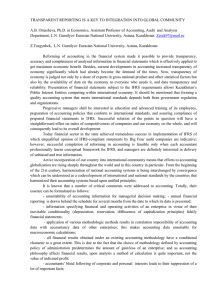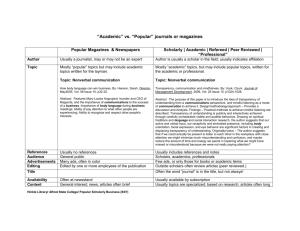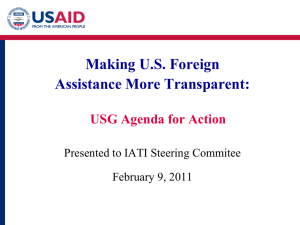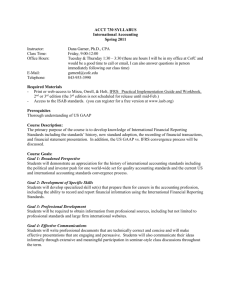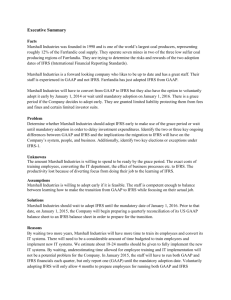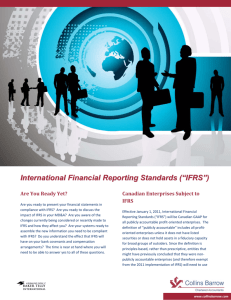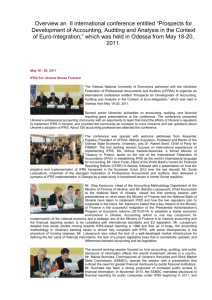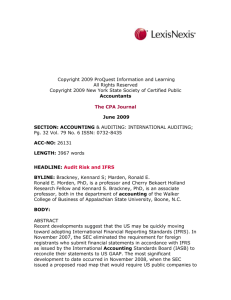Financial Reporting Standards & Transparency
advertisement
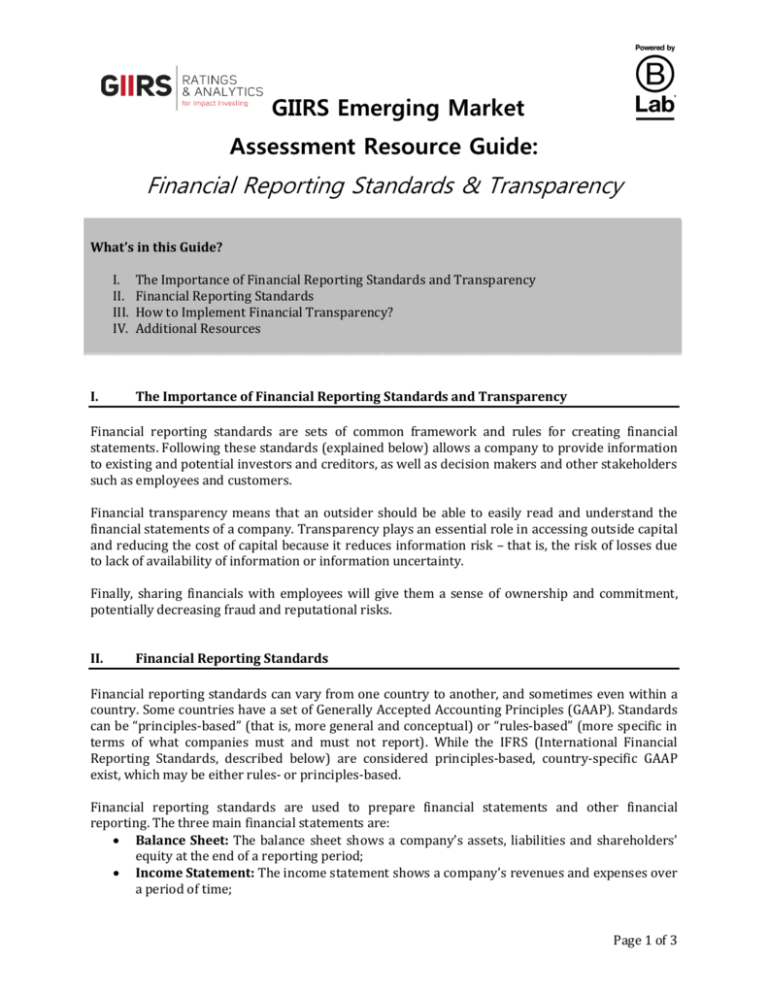
GIIRS Emerging Market Assessment Resource Guide: Financial Reporting Standards & Transparency What’s in this Guide? I. II. III. IV. I. The Importance of Financial Reporting Standards and Transparency Financial Reporting Standards How to Implement Financial Transparency? Additional Resources The Importance of Financial Reporting Standards and Transparency Financial reporting standards are sets of common framework and rules for creating financial statements. Following these standards (explained below) allows a company to provide information to existing and potential investors and creditors, as well as decision makers and other stakeholders such as employees and customers. Financial transparency means that an outsider should be able to easily read and understand the financial statements of a company. Transparency plays an essential role in accessing outside capital and reducing the cost of capital because it reduces information risk – that is, the risk of losses due to lack of availability of information or information uncertainty. Finally, sharing financials with employees will give them a sense of ownership and commitment, potentially decreasing fraud and reputational risks. II. Financial Reporting Standards Financial reporting standards can vary from one country to another, and sometimes even within a country. Some countries have a set of Generally Accepted Accounting Principles (GAAP). Standards can be “principles-based” (that is, more general and conceptual) or “rules-based” (more specific in terms of what companies must and must not report). While the IFRS (International Financial Reporting Standards, described below) are considered principles-based, country-specific GAAP exist, which may be either rules- or principles-based. Financial reporting standards are used to prepare financial statements and other financial reporting. The three main financial statements are: Balance Sheet: The balance sheet shows a company’s assets, liabilities and shareholders’ equity at the end of a reporting period; Income Statement: The income statement shows a company’s revenues and expenses over a period of time; Page 1 of 3 GIIRS EM Resource Guide: Financial Reporting Standards & Transparency Statement of Cash Flows: The statement of cash flows shows inflows and outflows of cash in three categories: operating activities, investing activities, and financing activities.1 Following local or national standards represents the first step toward good accounting practice. The IFRS represent the most well-known and truly global set of financial reporting standards. IFRS are issued by the International Accounting Standards Board (IASB), with the goal to make financial comparisons as easy as possible internationally. IASB has also developed the IFRS for SMEs, which can more appropriate for private entities. For more information visit: http://www.ifrs.org/ III. How to Implement Financial Transparency? Financial transparency can be ensured by having both strong financial controls internally and using third party auditors. 1. Financial controls: Financial controls play an important role in ensuring the accuracy of reporting, eliminating fraud and protecting the company’s resources, both physical assets and intangible (such as reputation). Sound financial controls include: - Segregation of duties: no one person should be in charge of initiating, approving, recording, and reconciling transactions. This reduces the risk of both erroneous and inappropriate actions. - Limited system access to appropriate personnel only. - Limited credit/ATM cards access to appropriate personnel only - Inventory management system with routine management oversight or third party review. 2. Use of auditors:2 Auditors lend credibility to financial information by providing independent verification of manager-reported information. Specifically, auditors provide an independent assessment of the accuracy and fairness with which financial information represents the results of operations, financial position, and cash flows of a company. 3. Sharing financial statements: While privately-held companies are not usually required to disclose their financial information publicly, doing so is recommended as part of an effective corporate governance strategy. International Fund for Agriculture and Development, http://www.ifad.org/operations/pf/finance/audit/finance_guide.pdf 2 Transparency, Ownership, and Financing Constraints in Private Firms (Hope, Thomas, and Vyas), http://centerforpbbefr.rutgers.edu/20thfea/accountingpapers/session8/hope,%20thomas,%20and%20vyas.pdf 1 Page 2 of 3 GIIRS EM Resource Guide: Financial Reporting Standards & Transparency Increased information symmetry between the controlling shareholder(s) and managers can create a more secure and stable environment for long-term investment strategies. Better informed employees will feel more connected to the performance of the company and will tend to be more productive. Moreover, such practices tend to decrease turnover rates as well as instances of fraud. IV. Additional Resources For more help with implementing financial controls, see “GIIRS EM Resource Guide: Implementing Financial Controls.” For definitions on financial indicators please refer to the IRIS standards under ‘Financial Performance’: http://iris.thegiin.org/indicator/ For more information about IFRS, and in particular, the IFRS for SMEs standard together with implementation guidelines and training material, visit: http://www.ifrs.org/ For more information about US GAAP, visit the Federal Accounting Standards Advisory Board’s website: http://www.fasab.gov/ The OECD Principles of Corporate Governance provide practical guidance for corporate governance best practices, including protection of shareowner rights and board responsibilities, to stock exchanges, investors, corporations, and others. For more information, go to: www.oecd.org/corporate Page 3 of 3


